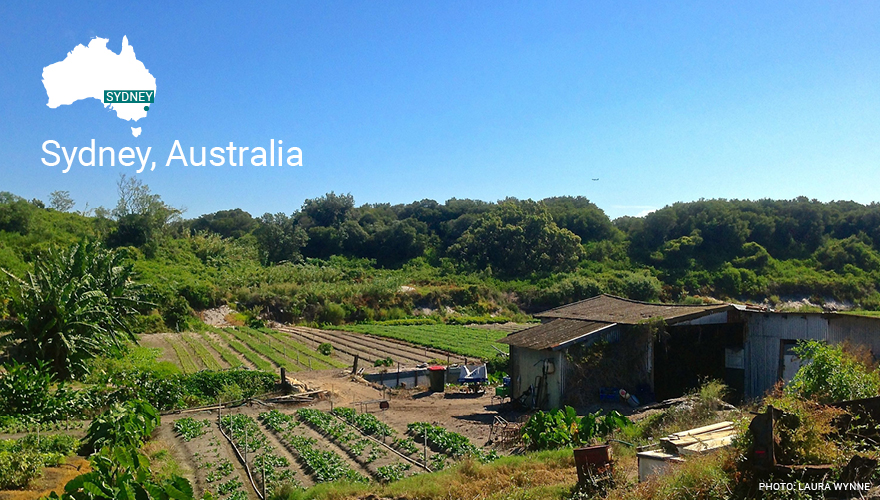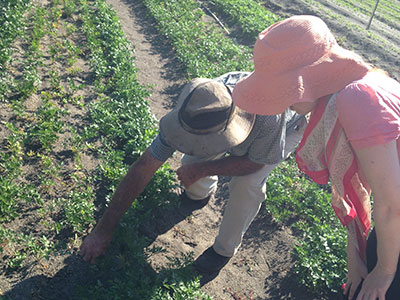Fifteen local Sydney stakeholders were brought together on 5th March, 2015 for the Sydney P-FUTURES Phase 1 workshop, held at the University of Technology Sydney to collectively explore where we are now, where we want to be and how we might get there. Participants were diverse, ranging from Department of Environment & Heritage to local farmers to social enterprises (see PARTNERS). 15 local stakeholders, 4 local research partners and 2 international research partners participated.
Workshop objectives were to:
- Explore risks and vulnerabilities for Sydney to the global phosphorus challenge (such as fertilizer price spikes, algal blooms, growing food demand, wastewater infrastructure, etc.)
- Explore opportunities for Sydney to effectively adapt to such challenges, taking into account Sydney’s future visions and existing plans.
- Contribute to shaping the future research agenda for P-FUTURES in all four cities to develop tools to transform the way cities manage phosphorus
Process:
Exploring the current situation: Following introductory presentations on the emerging global phosphorus scarcity and pollution challenge, local participants highlighted their current sector priorities, pressures and drivers, to create a shared knowledge base. Small groups subsequently mapped out how their sectors inter-related to eachother, to phosphorus and how Sydney was specifically vulnerable to the global phosphorus challenge.
Developing future transformative goals: After sustainable phosphorus vignettes from around the world, including other P-FUTURES cities, participants were asked “if there’s one big sustainable phosphorus initiative you would like to see in Sydney, what would it be?”. Small groups developed shared goals, and were asked to ‘spruce up’ their goals to ensure they were bold, sustainable and transformative. Finally, groups were asked to develop slogans that best represented their goals (for a prize of local tea from Malawi).
Identifying transition pathways: Groups were asked to consider the current capacity of actors to adapt or transform and to identify what was enabling or constraining their ambitious goals from being achieved. Groups formulated these as actions on a pathway.
Outcomes & key highlights
Current situation: local stakeholder priorities:
- Managing growth of Sydney by 1.6 million people over the next 20 years.
- Ensuring viability in the mid-long-term of intensive horticultural producers; labour supply & competitiveness, pest management, water availability and soil quality.
- Collaborative approach between state and local government in policy development and resourcing processes on the ground.
- Driving/increasing the diversion of organic materials from landfill; converting food waste into compost to grow food and reduce transport needs.
- Safe and effective wastewater management and recycling; e.g. managing high P losses in coastal wastewater (no regulation for N&P) and managing increasing future N&P discharges in inland wastewater in massive growth areas.
- Sustainable agriculture – provide land and natural resources for agricultural protection; increasing P efficiency in agriculture and decreasing losses.
- Viable livelihoods for Australian farming families.
Future transformative goals: In small groups, participants developed a range of goals, many of which related to reusing recovered phosphorus locally:
- Reduce the gap between demand and supply of phosphorus within Sydney (with sustainable imports and exports when necessary); Using biosolids within the Sydney Basin.
- Waste is treated as a productive resource within Sydney’s circular economy, contributing to agricultural production.
- Utilising majority of organic waste (80-90%) – set real targets.
- more on-farm recycling of nutrients through composting and wastewater management strategies.
Transition pathways: Initiatives identified to enable necessary shifts towards these goals include:
- Increasing awareness around the phosphorus issue among growers, the fertilizer industry, and the waste management industry.
- Increasing dialogue between these sectors so that they can identify synergies towards more effective nutrient management, especially ensuring that recycled fertilizers meet grower requirements.
- Create a market for the waste.
- Provide independent advice for farmers, including demo sites, good communication including digital resources
- Link phosphorus to a broader policy framework, such as bioenergy, composting.
- Retaining farmland in the west.
- Programs to facilitate diet change.
- Require soil testing to ensure farmers apply the appropriate amount and form of phosphorus.
 Local research partner:
Local research partner: Current urban planning documents for Sydney have yet to put an emphasis on preservation or strategic management of agricultural land in the Sydney Basin, creating risks for Sydney’s food system (Read more).
Current urban planning documents for Sydney have yet to put an emphasis on preservation or strategic management of agricultural land in the Sydney Basin, creating risks for Sydney’s food system (Read more).


